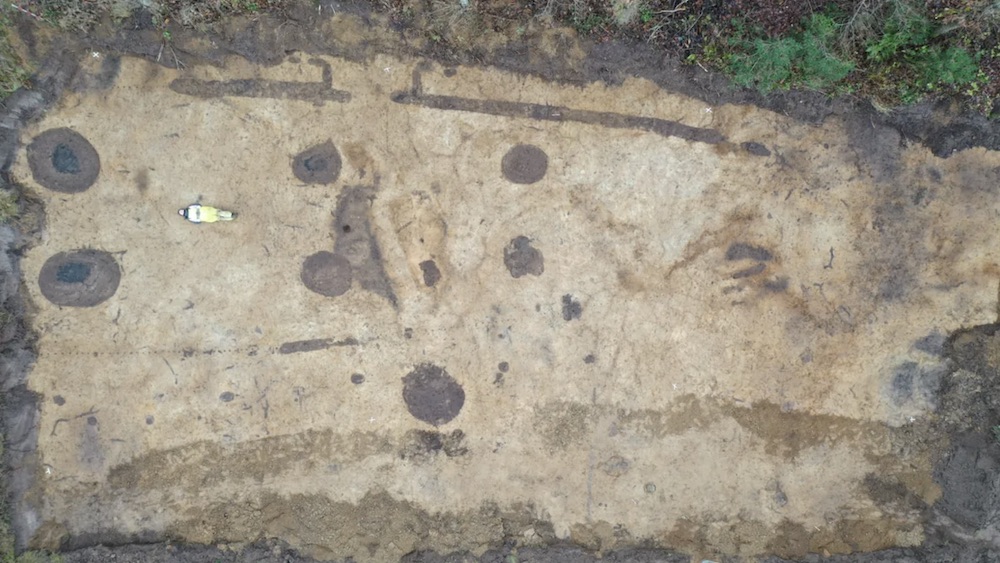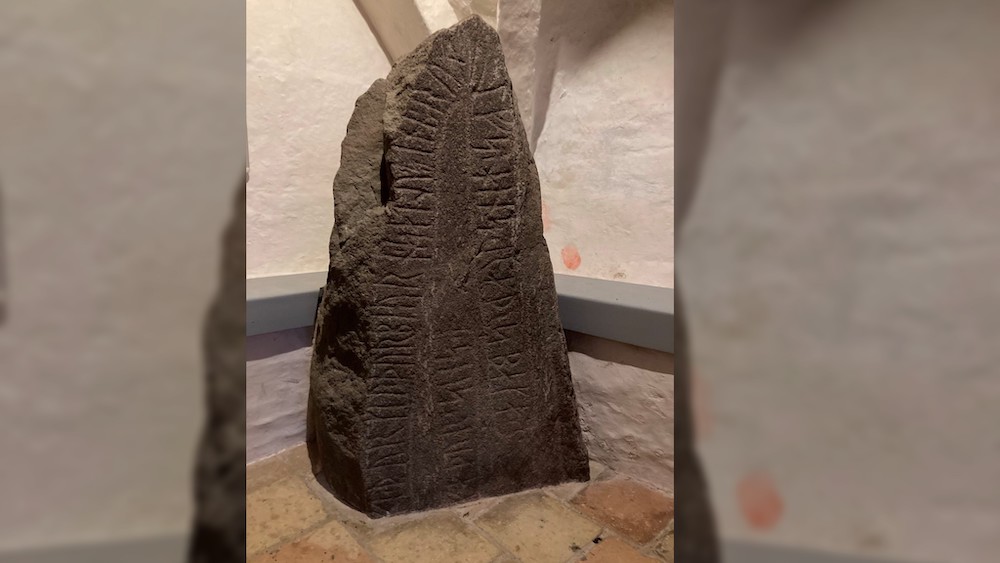Giant Viking hall, possibly connected to Harald Bluetooth, unearthed in Denmark
Archaeologists in Denmark have unearthed portions of a massive Viking hall, with more of the structure still buried.

Archaeologists in Denmark have unearthed a portion of a massive Viking hall that may be connected to King Harald "Bluetooth" Gormsson, who reigned from A.D. 958 to 986, during the Viking Age.
The structure, which is located in North Jutland, a region that encompasses Denmark's northernmost tip, is "the largest Viking Age find of this nature" in the past decade, and measures 131 feet (40 meters long). So far, only half of the building has been excavated, and archaeologists think it was built sometime between A.D. 950 and 1050, according to a statement.
"It came [as] a shock that we unearthed a building of such magnitude," Thomas Rune Knudsen, an archaeologist with North Jutland Museums who led the November excavation, told Live Science in an email. "The roof-carrying posts are enormous."
Related: Metal detectorist stumbles across Viking treasure hoard in Norway
The hall's design is similar to those of other structures in the area likely built during the reign of Bluetooth (after whom today's Bluetooth technology is named). Also known as Harald Blåtand, Bluetooth introduced Christianity to Denmark and helped unify Denmark and Norway. There are several structures associated with his reign, including the ring fortresses of Fyrkat, located along the banks of the Onsild River, and Aggersborg, in the village of Aggersund. Today, all that remains of the two circular fortresses are their turf-covered embankments.

Little is known from the region during that time period, Knudsen said.
While archaeologists aren't entirely certain of the hall's purpose, they do know that "it isn't related to daily life, but a place where the social elite met, negotiated and had guilds … [and was where] important decisions that would shape the region [were] decided," Knudsen said.
Get the world’s most fascinating discoveries delivered straight to your inbox.
Most of the hall has yet to be excavated. "It seems very likely that further buildings could exist at the site," Knudsen said. "So far, we have only uncovered half [of the] hall, but it would be strange if nothing else existed in the near vicinity."
The land on which the Viking hall sits might be connected to Runulv den Rådsnilde, a nobleman whose family operated a farm on the site. This determination is based on a 5-foot-tall (1.5 m) rune stone found nearby from dating to sometime between A.D. 970 to 1020 that is engraved with the words "Hove, Thorkild, Thorbjørn set their father Runulv den Rådsnilde's stone."
"Both the rune stone and the hall are elements that belong to the political and social elite," Knudsen said.
The rune stone is now on display at the nearby Hune Romanesque church.
Jennifer Nalewicki is former Live Science staff writer and Salt Lake City-based journalist whose work has been featured in The New York Times, Smithsonian Magazine, Scientific American, Popular Mechanics and more. She covers several science topics from planet Earth to paleontology and archaeology to health and culture. Prior to freelancing, Jennifer held an Editor role at Time Inc. Jennifer has a bachelor's degree in Journalism from The University of Texas at Austin.


